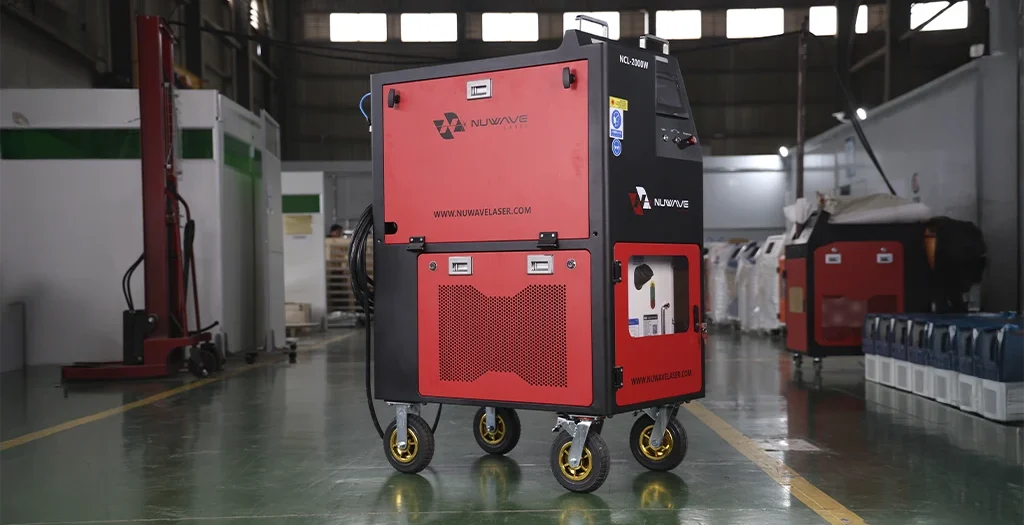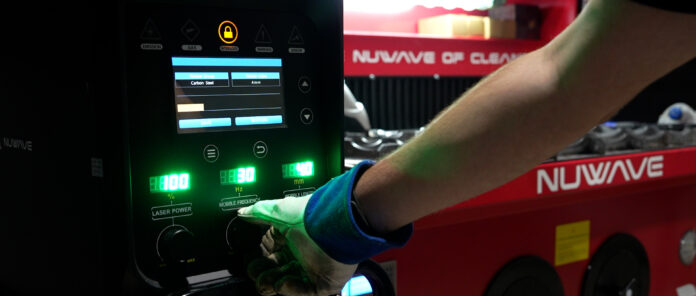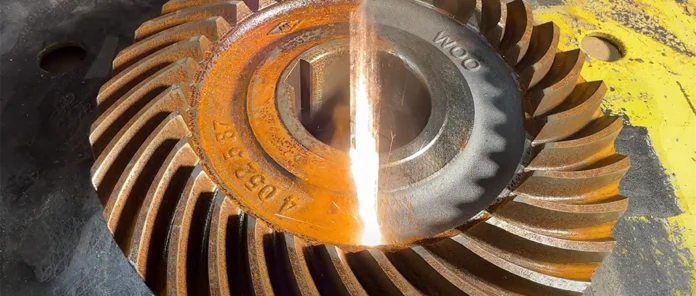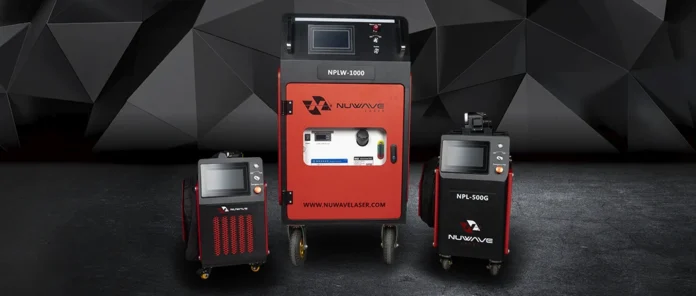If you’re looking for a better way to blast through rust and surface contaminants, industrial laser cleaning machines may just be the ideal choice. There’s just one thing standing between you and exceptional cleaning efficiency, and that’s figuring out which piece of equipment will be the best fit for your business.
Spec sheets can often look as though they’re written in a foreign language, which makes identifying the numbers and details you should be paying attention to virtually impossible. With that in mind, here are the most important attributes to consider:
Power Output
Most laser machines highlight their power output in terms of wattage (W). That makes sense, as watts indicate how much power the machine produces. Higher-wattage equipment can handle tougher materials and a wider range of surfaces.
Pulse laser cleaning machines typically have wattages ranging from 100W to 500W (or higher). Machines on the lower end of that spectrum can remove thin layers of rust or paint. They are versatile tools and are a great option for removing contamination from delicate surfaces.
Mid-power devices can produce 200W-300W beams that efficiently blast through multiple layers of oxidation or stains. Thicker layers of paint or corrosion will likely require a device with a 500W+ output.
Wavelength
A laser’s wavelength affects its ability to interact with different materials. Most machines operate in the nanometer (nm) range. Common wavelengths include 1064 nm and 1070 nm, which are capable of removing thicker contaminants from materials such as metal, stone, and plastic.
While some devices generate lower wavelengths, like 532nm, it’s generally best to choose a machine that leverages 1064 nm or 1070 nm. These devices are more versatile and can handle a wider range of surfaces.
Pulse Duration and Frequency
Duration refers to the amount of time the beam remains active during each pulse, and frequency refers to how often these pulses occur. Most machines you encounter will be classified as either pulsating or continuous waves.
Pulse machines are better suited for small to mid-sized projects. They have an adjustable frequency, which will be expressed in kilohertz (kHz). Continuous wave laser cleaning devices are best used for large-scale oil stains, paint, and corrosion.
Portability
If you need to transport your device between job sites, it’s best to choose a smaller and easy-to-move device. You don’t want your team lugging around a big bulky machine for small cleaning jobs, after all.
Identify the dimensions and weight of a machine before making your purchase. From there, consider the space you’ll be operating and whether portability matters for your business.
If you aren’t concerned with transporting the device, though, prioritize other attributes like power, wavelength, and pulse duration. Larger machines will provide better versatility and cleaning efficiency.
Safety Features
Safety should always be a top priority when choosing a laser cleaning machine. Look for devices with built-in features like automatic shutoff mechanisms, protective housings around the laser, and user-friendly controls.
Ease of Use
You don’t want a device that’s hard to use. Choose a platform with a simple interface so you can easily educate your team on its functionality and safe use. Minimizing the learning curve will help your staff quickly acclimate themselves to the machine and reduce the risk of an accident.
Explore Nuwave Equipment
If you’re not sure which solution will be right for you, the experts at Nuwave have you covered. Schedule a consultation, and let’s chat about your intended use case and machine requirements. We’ll help you identify the ideal platform for your business.





